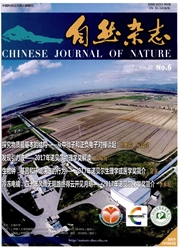

 中文摘要:
中文摘要:
在翼龙研究的很长一段时间内研究者都推测其为卵生,直到004年先后报道的三枚来自早白垩世合有胚胎的翼龙蛋才证实了翼龙的确为卵生。之后,在晚侏罗世燕辽生物群中发现一件悟空翼龙类的标本,在其体外腰带附近和体内共发现了两枚大小相当的翼龙蛋,据此了解到翼龙具有双侧功能性输卵管,不同于现生的大多数鸟类。在中国新疆哈密首次报道了5枚早白垩世的三维立体保存的翼龙蛋化石,对其中一枚蛋化石进行扫描电镜观察,证明其与现生锦蛇蛋的蛋壳结构十分相似,具有一层薄的钙质外层和一层厚的壳膜层。在今后的考察中,有望在新疆哈密地区发现三维立体保存的合胚胎的蛋化石,并在翼龙胚胎发育方面取得重要的研究进展。
 英文摘要:
英文摘要:
Pterosaur researchers speculated that pterosaurs were oviparous for a long time, and they confirmed it based on the three pterosaur eggs and embryos from the Early Cretaceous reported in 2004. Then, a wukongopterid pterosaur associated with two similar-sized eggs, one outside body near the pelvis and the other inside, was discovered in the Yanliao Biota from the Late Jurassic. It indicated that the pterosaur had two functional oviducts, which differed from mostly modem birds. Five three-dimensionally- preserved pterosaur eggs were first reported from the Early Cretaceous in Hami, Xinjiang, China. The eggshell of one egg, observed under scanning electron microscopy, comprises a thin calcareous external hard shell followed by a thick membrane, which is similar to that of the snake Elaphe. It is hopeful to discover some three-dimensional pterosaur eggs with embryos in Hami, which will make a great progress in pterosaur embryology in the future.
 同期刊论文项目
同期刊论文项目
 同项目期刊论文
同项目期刊论文
 The postcranial skeleton of the iguanodontian ornithopod Jinzhousaurus yangi from the Lower Cretaceo
The postcranial skeleton of the iguanodontian ornithopod Jinzhousaurus yangi from the Lower Cretaceo The soft tissue of Jeholopterus (Pterosauria, Anurognathidae, Batrachognathinae) and the structure o
The soft tissue of Jeholopterus (Pterosauria, Anurognathidae, Batrachognathinae) and the structure o A new oofamily of dinosaur egg from the Upper Cretaceous of Tiantai Basin, Zhejiang Province, and it
A new oofamily of dinosaur egg from the Upper Cretaceous of Tiantai Basin, Zhejiang Province, and it New toothed flying reptile from Asia: close similarities between early Cretaceous pterosaur faunas f
New toothed flying reptile from Asia: close similarities between early Cretaceous pterosaur faunas f 期刊信息
期刊信息
